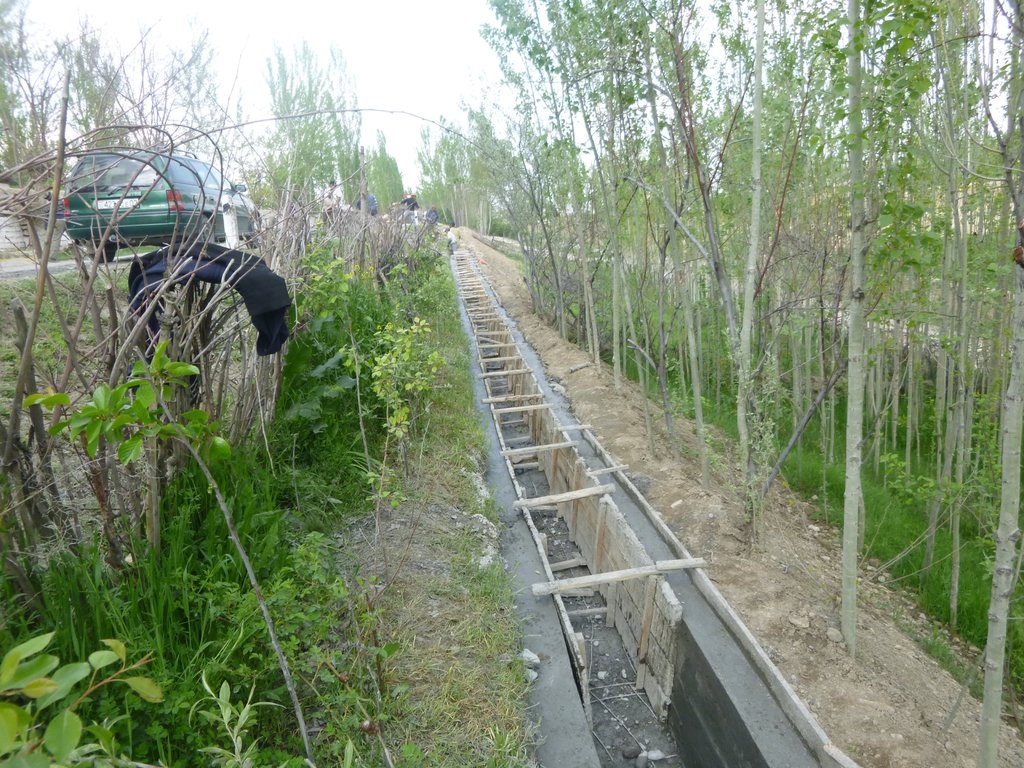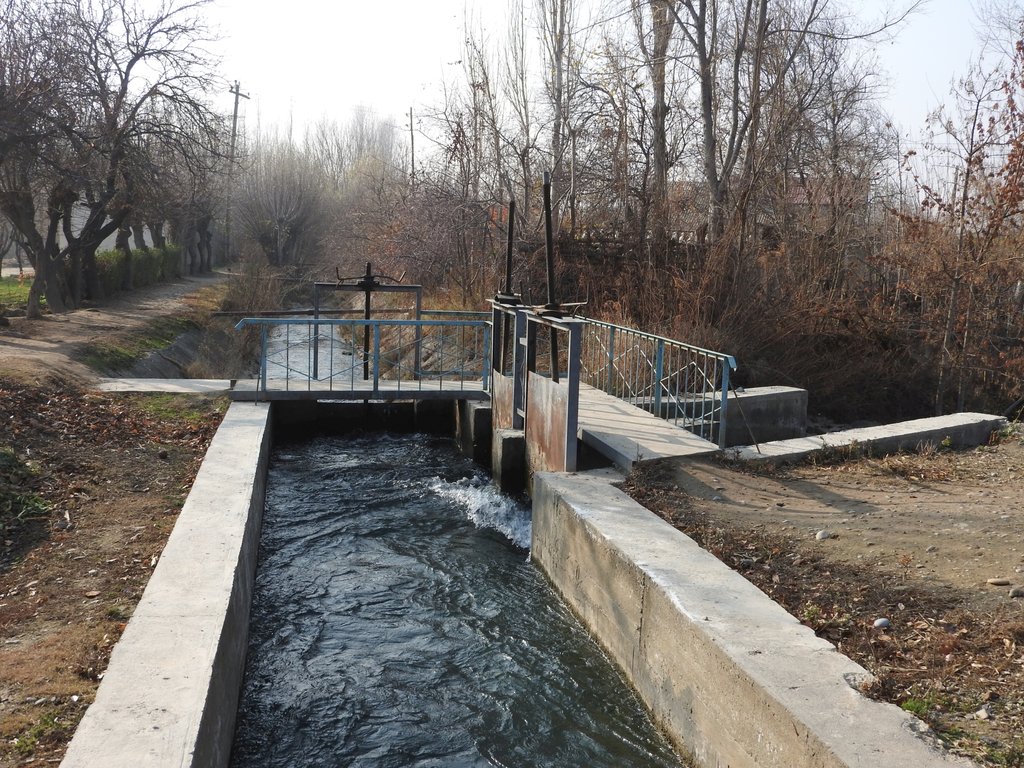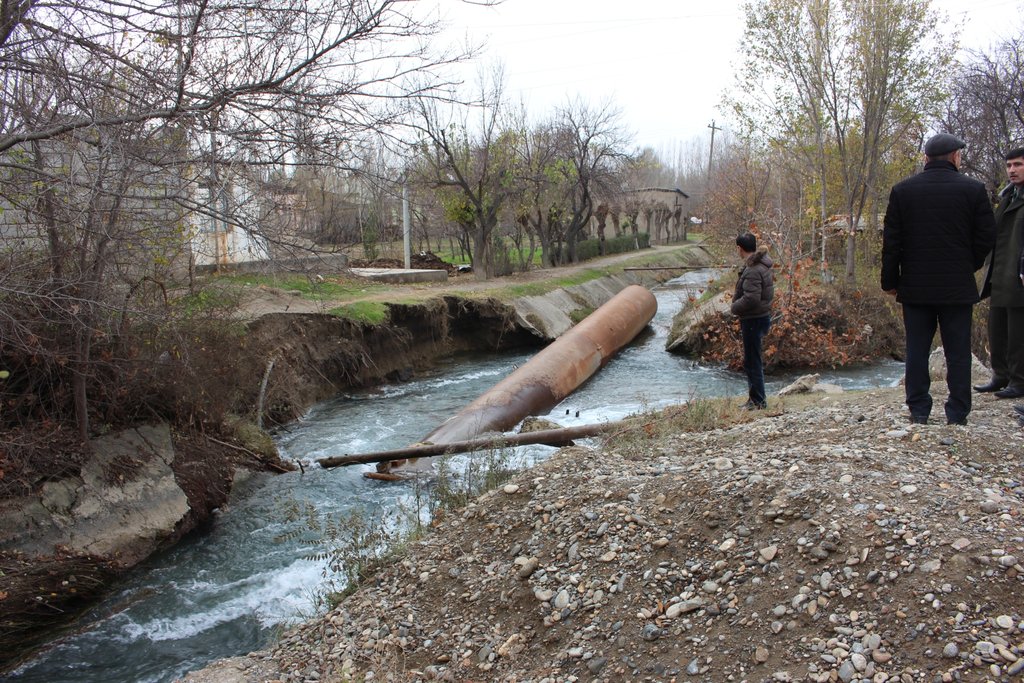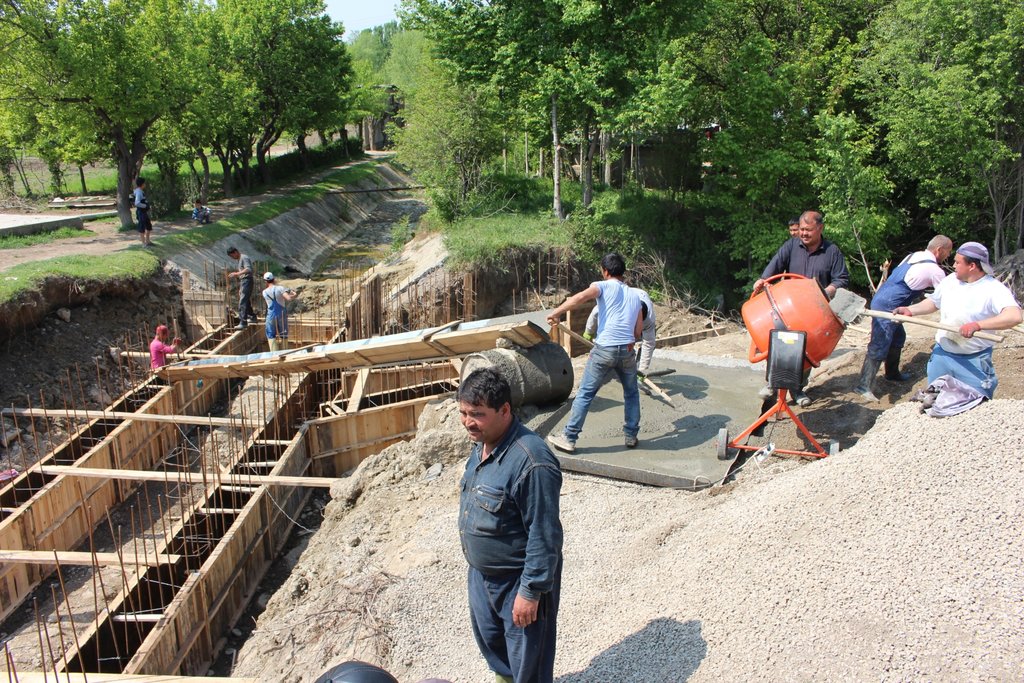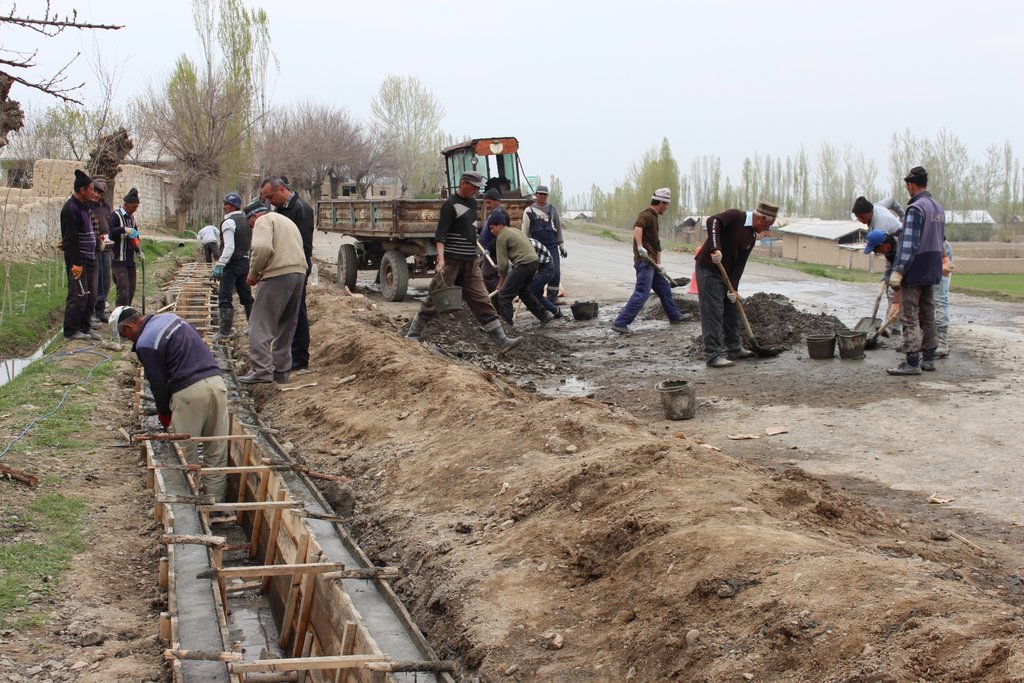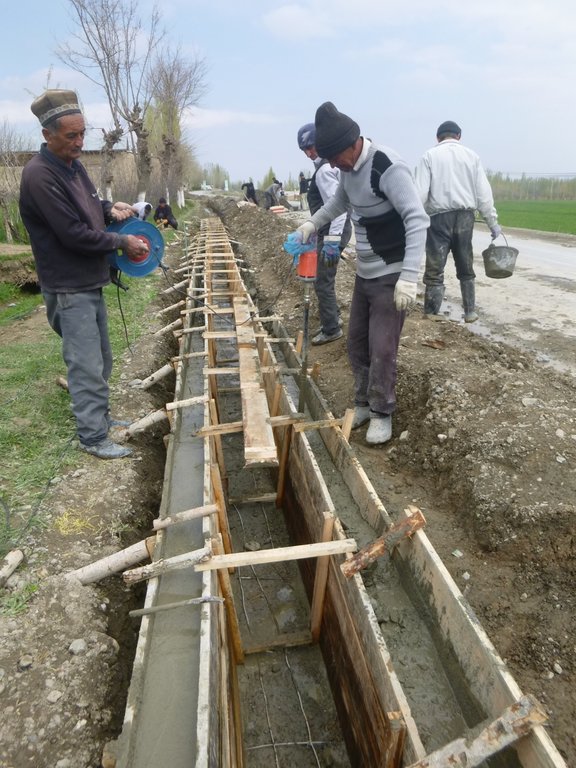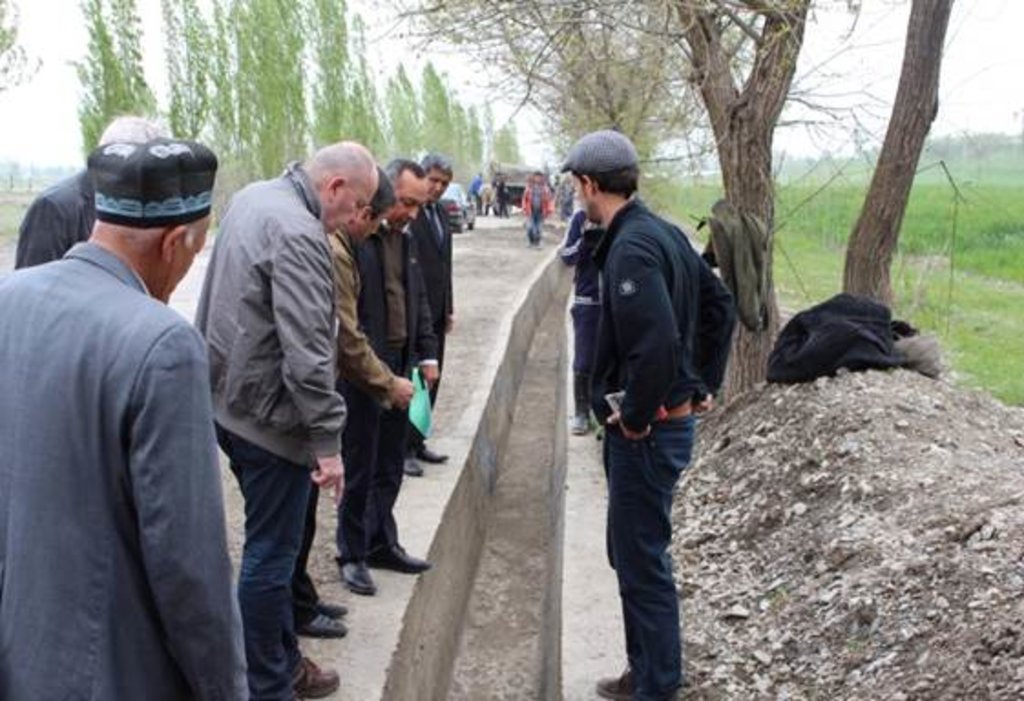Increased efficiency of irrigation water use to address climate change related water shortage [Tajikistan]
- Creation:
- Update:
- Compiler: Stefan Michel
- Editor: –
- Reviewer: Umed Vahobov
Повышение эффективности использования ирригационной воды для решения проблемы нехватки воды, связанной с изменением климата
approaches_4318 - Tajikistan
View sections
Expand all Collapse all1. General information
1.2 Contact details of resource persons and institutions involved in the assessment and documentation of the Approach
Key resource person(s)
SLM specialist:
Negmatov Negmatjon
negmatdzhon.negmatov@giz.de
Deutsche Gesellschaft für Internationale Zusammenarbeit (GIZ)
Tajikistan
Muhidinov Nodir
+992 92 777 0134
nodir.sfl@gmail.com
Deutsche Gesellschaft für Internationale Zusammenarbeit (GIZ)
Tajikistan
Name of project which facilitated the documentation/ evaluation of the Approach (if relevant)
Strengthening of Livelihoods through Climate Change Adaptation in Kyrgyzstan and TajikistanName of the institution(s) which facilitated the documentation/ evaluation of the Approach (if relevant)
GIZ Tajikistan (GIZ Tajikistan) - Tajikistan1.3 Conditions regarding the use of data documented through WOCAT
When were the data compiled (in the field)?
27/11/2018
The compiler and key resource person(s) accept the conditions regarding the use of data documented through WOCAT:
Yes
1.4 Reference(s) to Questionnaire(s) on SLM Technologies

Applying drip irrigation for efficient irrigation water use … [Tajikistan]
Drip irrigation substantially saves water compared to conventional furrow irrigation. Here the technology is applied for different perennial and annual crops and with use of different sources of water.
- Compiler: Stefan Michel
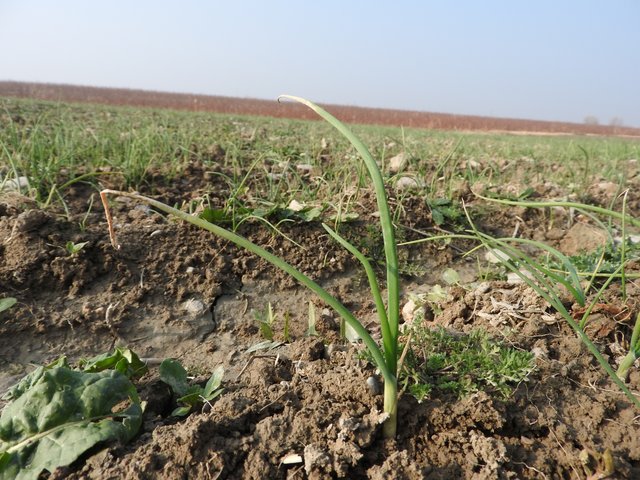
Onion production by greenhouse propagation and transplantation [Tajikistan]
Onion seeds are sown in sheeting greenhouses, where the onion seedlings are propagated. The seedlings are then replanted in the open field. This makes them less prone to extreme weather events and provides higher yield of better quality.
- Compiler: Stefan Michel
2. Description of the SLM Approach
2.1 Short description of the Approach
Climate change impact contributes to irrigation water shortage. The approach of improving irrigation water delivery, distribution and use prevents irrigation water losses and increases the productivity per amount of irrigation water available.
2.2 Detailed description of the Approach
Detailed description of the Approach:
Irrigated agriculture is in many areas limited by the availability of irrigation water. In many irrigated areas the canals delivering water to villages, distributing it between farms and the on-farm irrigation systems are in poor shape, which causes substantial water losses. The human population growth further contributes to shortages of irrigation water.
These problems are increasingly exacerbated by the impact of climate change. The already visible trends and predictions show higher levels of aridity, higher temperatures during the vegetation season, reduced overall precipitation in catchment areas, more irregular rainfall patterns, reduced snow packs and accelerated snow melt as well as the loss of glaciers as buffers of water flow. These factors all cause a reduction of available irrigation water, while higher temperatures and expansion of irrigated agriculture – partly also caused by increasing aridity and reduced feasibility of rain-fed farming – lead to higher irrigation water demand.
Additionally the increasing frequency and intensity of flashfloods, debris flows and landslides poses substantial risks to the stability and functioning of irrigation canals and thus to the livelihoods of farmers and food security.
The approach therefore aims at reducing the substantial losses of irrigation water caused be seepage from delivery and distribution canals, structural problems in irrigation systems (diversion weirs) and on-farm irrigation. It also addresses risks caused by flashfloods, debris flows and landslides. The structures between major canals, which are managed by the Water Management Departments, and the individual farms are managed by the administrative communities, the mahalla committees, which represent the inhabitants of one village or a section of a larger village. These institutions are called communal self-governance structures, but are subordinated to the government as they are reporting to te sub-district or jamoat.
For the lining of water delivery and distribution canals, the rehabilitation of associated structures and the proofing against disaster events the project conducted a participatory assessment and planning process in the local communities, but with involvement of the district water and irrigation management authorities. In the result of this process key sections for lining and repair were selected and the project further assisted with technical planning and assistance in form of purchase of materials. The communities would contribute about 28% to 39% of the overall costs, mainly in form of voluntary communal work, the so called hashar as well as in form of construction materials.
The community is also in charge of future operation and maintenance of the rehabilitated and disaster and climate proofed irrigation structures.
2.3 Photos of the Approach
2.5 Country/ region/ locations where the Approach has been applied
Country:
Tajikistan
Region/ State/ Province:
Sughd region
Further specification of location:
Shahriston district, Sughdiyon village and J. Rasulov district, Dehmoi village
Map
×2.6 Dates of initiation and termination of the Approach
Indicate year of initiation:
2015
If precise year is not known, indicate approximate date when the Approach was initiated:
less than 10 years ago (recently)
2.7 Type of Approach
- project/ programme based
2.8 Main aims/ objectives of the Approach
Reduction of water losses from irrigation systems, improvement of irrigation water availability under conditions of climate change.
2.9 Conditions enabling or hindering implementation of the Technology/ Technologies applied under the Approach
availability/ access to financial resources and services
- hindering
Without external support insufficient financial resources
institutional setting
- enabling
Existence of community level management of irrigation networks
collaboration/ coordination of actors
- enabling
Collaboration between water management authorities and community leaders.
knowledge about SLM, access to technical support
- hindering
Project assistance required to provide engineering knowledge and skills to community
workload, availability of manpower
- enabling
Tradition of voluntary joint work for community needs "hashar"
3. Participation and roles of stakeholders involved
3.1 Stakeholders involved in the Approach and their roles
- local land users/ local communities
Local community members
Participation in identification of sections for rehabilitation/improvement;
Carrying out construction works.
- local government
Water management department at district level
Mahalla committee
Identification of sections for rehabilitation/improvement
Participation in planning
Organization of community work
- international organization
Deutsche Gesellschaft für Internationale Zusammenarbeit (GIZ)
Overall project implementation;
Technical planning and oversight;
Procurement of construction materials via competitive bidding process
If several stakeholders were involved, indicate lead agency:
Deutsche Gesellschaft für Internationale Zusammenarbeit (GIZ)
3.2 Involvement of local land users/ local communities in the different phases of the Approach
| Involvement of local land users/ local communities | Specify who was involved and describe activities | |
|---|---|---|
| initiation/ motivation | interactive | Local community members, indicating problem issues to community leadership, water management department and GIZ staff |
| planning | interactive | Involvement of community members in planning |
| implementation | self-mobilization | Local community members carrying out works through traditional voluntary community work ("hashar"). |
| monitoring/ evaluation | interactive | Local farmers involved in monitoring of water supply. |
3.4 Decision-making on the selection of SLM Technology/ Technologies
Specify who decided on the selection of the Technology/ Technologies to be implemented:
- mainly SLM specialists, following consultation with land users
Explain:
Technical aspects decided by specialized engineers taking into consideration the needs and observations of community members.
Specify on what basis decisions were made:
- evaluation of well-documented SLM knowledge (evidence-based decision-making)
- personal experience and opinions (undocumented)
4. Technical support, capacity building, and knowledge management
4.1 Capacity building/ training
Was training provided to land users/ other stakeholders?
No
4.2 Advisory service
Do land users have access to an advisory service?
Yes
Specify whether advisory service is provided:
- on land users' fields
4.3 Institution strengthening (organizational development)
Have institutions been established or strengthened through the Approach?
- yes, moderately
Specify the level(s) at which institutions have been strengthened or established:
- local
Describe institution, roles and responsibilities, members, etc.
Existing community institutions have been strengthened through joint successful implementation of the works and the need for further maintenance of irrigation system elements as common property.
Specify type of support:
- financial
- equipment
4.4 Monitoring and evaluation
Is monitoring and evaluation part of the Approach?
Yes
If yes, is this documentation intended to be used for monitoring and evaluation?
No
4.5 Research
Was research part of the Approach?
No
5. Financing and external material support
5.1 Annual budget for the SLM component of the Approach
Indicate the annual budget for the SLM component of the Approach in US$:
60000.00
If precise annual budget is not known, indicate range:
- 10,000-100,000
Comments (e.g. main sources of funding/ major donors):
The number indicates the immediate construction costs of three sites, where the approach was implemented, without costs for facilitation, planning, technical supervision, monitoring and evaluation. The main source of funding was the Government of Germany via GIZ. Communities contributed 28% to 39% in form of labour and locally available construction material.
5.2 Financial/ material support provided to land users
Did land users receive financial/ material support for implementing the Technology/ Technologies?
Yes
If yes, specify type(s) of support, conditions, and provider(s):
Technical planning and supervision, procurement of materials and transportation funded by GIZ.
5.3 Subsidies for specific inputs (including labour)
- none
If labour by land users was a substantial input, was it:
- voluntary
5.4 Credit
Was credit provided under the Approach for SLM activities?
No
5.5 Other incentives or instruments
Were other incentives or instruments used to promote implementation of SLM Technologies?
No
6. Impact analysis and concluding statements
6.1 Impacts of the Approach
Did the Approach empower local land users, improve stakeholder participation?
- No
- Yes, little
- Yes, moderately
- Yes, greatly
Mobilization for joint work ti address problems affecting all farmers/community members
Did the Approach help land users to implement and maintain SLM Technologies?
- No
- Yes, little
- Yes, moderately
- Yes, greatly
Construction and maintenance of irrigation systems of higher efficiency with reduced water losses and risk of disaster impact.
Did the Approach improve coordination and cost-effective implementation of SLM?
- No
- Yes, little
- Yes, moderately
- Yes, greatly
Coordination between donor, district level water management department, community leadership and community members
Did the Approach mobilize/ improve access to financial resources for SLM implementation?
- No
- Yes, little
- Yes, moderately
- Yes, greatly
Mobilization of own resources in the community and of donor funding.
Did the Approach improve knowledge and capacities of land users to implement SLM?
- No
- Yes, little
- Yes, moderately
- Yes, greatly
Improved technical knowledge on construction of irrigation systems minimizing water losses and reducing disaster risk.
Did the Approach improve knowledge and capacities of other stakeholders?
- No
- Yes, little
- Yes, moderately
- Yes, greatly
Community leadership and district level water management department - improved technical knowledge on construction of irrigation systems minimizing water losses and reducing disaster risk.
Did the Approach build/ strengthen institutions, collaboration between stakeholders?
- No
- Yes, little
- Yes, moderately
- Yes, greatly
Coordination between donor, district level water management department, community leadership and community members
Did the Approach mitigate conflicts?
- No
- Yes, little
- Yes, moderately
- Yes, greatly
More efficient water delivery and distribution reduces conflict about access to irrigation water within the community and between villages.
Did the Approach empower socially and economically disadvantaged groups?
- No
- Yes, little
- Yes, moderately
- Yes, greatly
Mobilization of all community members to contribute to activities with common benefits.
Did the Approach encourage young people/ the next generation of land users to engage in SLM?
- No
- Yes, little
- Yes, moderately
- Yes, greatly
Mobilization of all community members to contribute to activities with common benefits.
Did the Approach lead to improved food security/ improved nutrition?
- No
- Yes, little
- Yes, moderately
- Yes, greatly
Reduced shortage of irrigation water and reduced risk of failure of irrigation systems due to disasters led to secure yields in irrigated agriculture and improved food security.
Did the Approach lead to improved access to water and sanitation?
- No
- Yes, little
- Yes, moderately
- Yes, greatly
Water from irrigation canals is partly also used for household needs.
Did the Approach improve the capacity of the land users to adapt to climate changes/ extremes and mitigate climate related disasters?
- No
- Yes, little
- Yes, moderately
- Yes, greatly
Increased resilience to climate change related irrigation water shortage by improved efficiency of water delivery and distribution; Reduced proneness of irrigation system to natural disaster, the frequency and intensity of which is increasing due to climate change.
Did the Approach lead to employment, income opportunities?
- No
- Yes, little
- Yes, moderately
- Yes, greatly
Indirectly by providing secure access to sufficient irrigation water for farming.
6.2 Main motivation of land users to implement SLM
- increased production
Sufficient water available for irrigated agriculture
- reduced risk of disasters
Proneness of irrigation system to flashfloods, debris flows and similar events.
- conflict mitigation
Reduced conflict over access to irrigation water.
6.3 Sustainability of Approach activities
Can the land users sustain what has been implemented through the Approach (without external support)?
- yes
If yes, describe how:
Maintenance of irrigation systems through contributions of all water users and join voluntary work ("hashar").
6.4 Strengths/ advantages of the Approach
| Strengths/ advantages/ opportunities in the land user’s view |
|---|
| Access to technology and materials, which would not affordably without external support. |
| Secure and sufficient supply of irrigation water. |
| Reduced risk of failure of irrigation system caused by natural disaster during critical times (irrigation period). |
| Strengths/ advantages/ opportunities in the compiler’s or other key resource person’s view |
|---|
| Same as land users' perspective. |
| Mobilization of resources of the land users and their community. |
| Strengthening of collaboration between district level water management departments, community leadership and community members. |
6.5 Weaknesses/ disadvantages of the Approach and ways of overcoming them
| Weaknesses/ disadvantages/ risks in the land user’s view | How can they be overcome? |
|---|---|
| None |
| Weaknesses/ disadvantages/ risks in the compiler’s or other key resource person’s view | How can they be overcome? |
|---|---|
| None |
7. References and links
7.1 Methods/ sources of information
- field visits, field surveys
- interviews with SLM specialists/ experts
Links and modules
Expand all Collapse allLinks

Applying drip irrigation for efficient irrigation water use … [Tajikistan]
Drip irrigation substantially saves water compared to conventional furrow irrigation. Here the technology is applied for different perennial and annual crops and with use of different sources of water.
- Compiler: Stefan Michel

Onion production by greenhouse propagation and transplantation [Tajikistan]
Onion seeds are sown in sheeting greenhouses, where the onion seedlings are propagated. The seedlings are then replanted in the open field. This makes them less prone to extreme weather events and provides higher yield of better quality.
- Compiler: Stefan Michel
Modules
No modules



